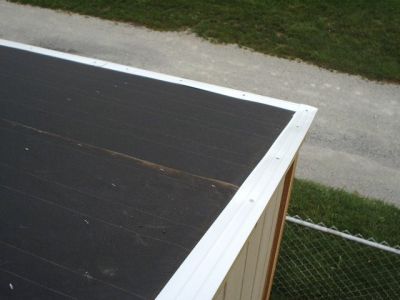Installing Flashing And Drip Edge


The correct installation sequence for roof drip edge, roofing felt and ice and water shield can be confusing, since it changes from eaves to gable ends. Protect your fascia with a sheet-metal drip edge. Installing a Drip Edge. Fix the problem by installing sheet-metal drip edge. Roof drip edge flashing installation requirements: Is drip edge flashing needed? How & where should it be installed on roof eaves & gable ends? Apokalypsis Chelsea Wolfe Rar.
All Videos in This Series – Applying Drip-Edge and Underlayment Tom Melillo, residential project manager, roof services: Drip edge has basically two purposes. Driver For Lg Flatron. The first is to prevent blow-under leaks in wind-driven rains. And in this particular (F-4) drip edge, there’s a bit of a shelf on it that sticks off the edges of the roof. That shelf acts as a support for the shingles so they are not just hanging off the edge of the roof. Narrator: Drip edge also prevents rainwater from running down the fascia, and instead directs it into the gutter. The installers use tin snips to cut the drip edge to size, and follow up with a small flat bar to open up the ends. This allows for an easy overlap of about 1-1/2 inches where two pieces of drip edge meet.
Now it’s time for the peel-and-stick membrane. Also known as ice-and-water shield, self-sealing peel-and-stick will be installed along the eaves right over the drip edge. This provides a water-tight membrane to protect against ice dams. [Editor’s note, 2017: The IRC requires drip edge joints be lapped by 3 in. That’s been the case since its first publication in 2000.
And the ARMA roof shingle manual calls for 3 in. As well.] Tom Melillo: Most building codes want your peel-and-stick membrane to be 2-ft. Inside the heated wall.
The roll is 3-ft. Wide, so if you have a 1-ft. Soffit, you need 3 feet of peel-and-stick. If you have a 2-ft. Soffit, in order to follow code, you’ll need two courses of peel-and-stick.
The manufacturer puts a split in the backing so you can peel off half at a time. This way you can put the membrane down, peel off half, stick it where you want it, and peel off the other half.
Narrator: On the eaves, the peel-and-stick goes over the drip edge (though there is some argument in the industry as whether this is the best way to install drip edge). On the rakes, the drip edge goes over the membrane, so the roofers apply the membrane first. The drip edge is nailed in place using 1-1/2 galvanized roofing nails. A felt-tip marker works great for marking cuts. And, again, prying open the end with a small flat bar allows the pieces to overlap cleanly. Once the roofers finish off the other rake with drip edge, the put another layer of peel-and-stick along the side-wall transition, lapping it about 8-in. This adds extra protection against possible leaks.